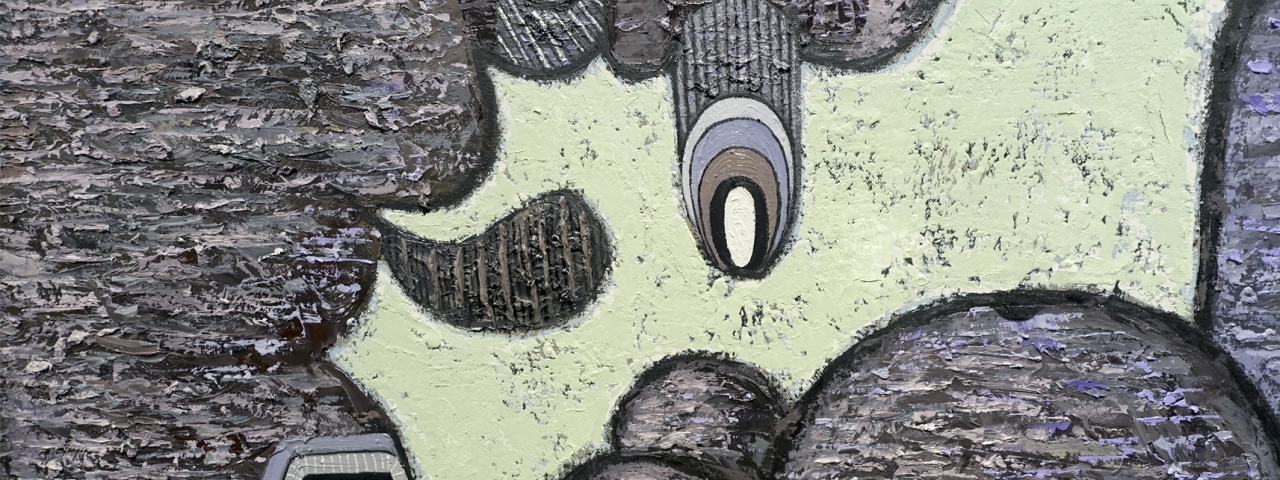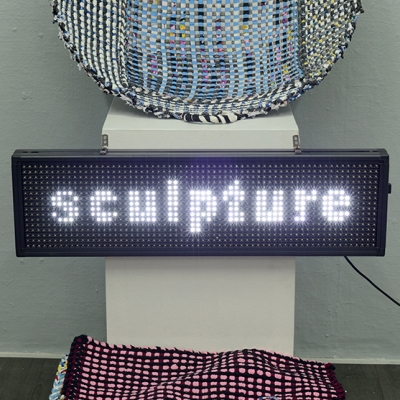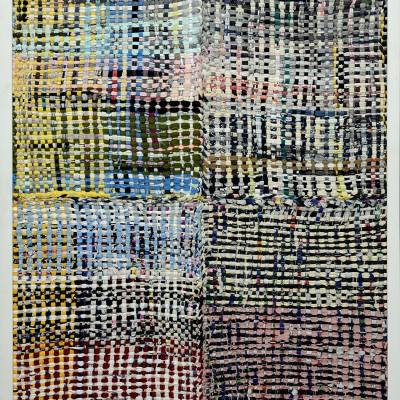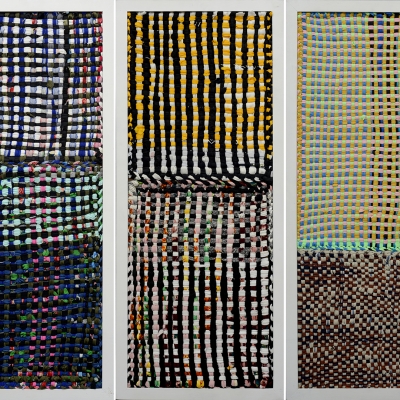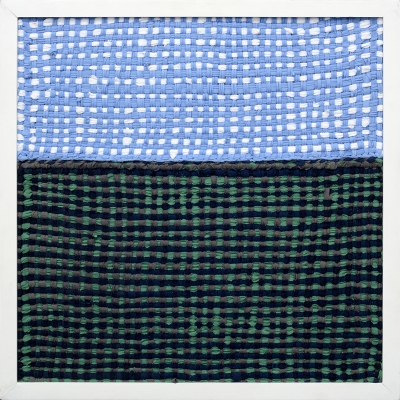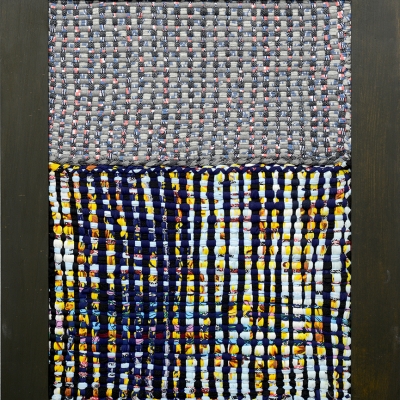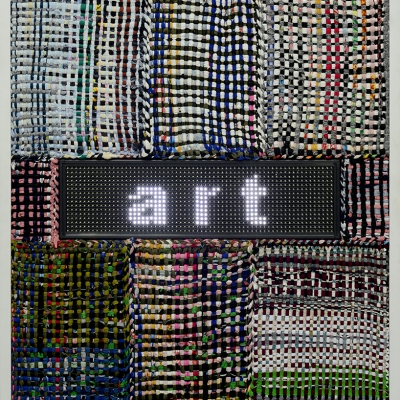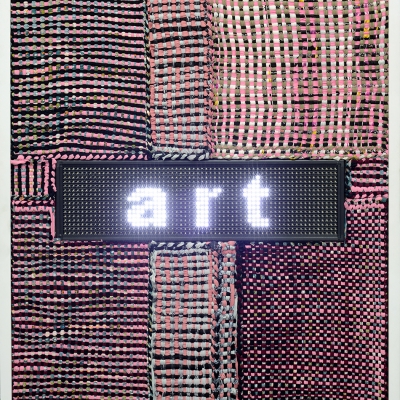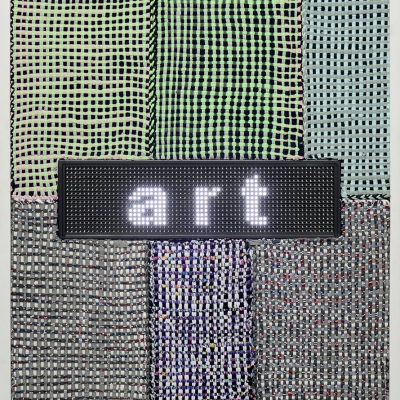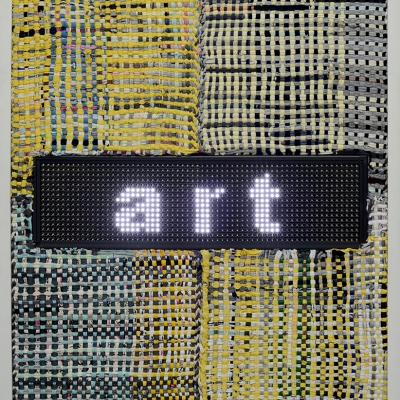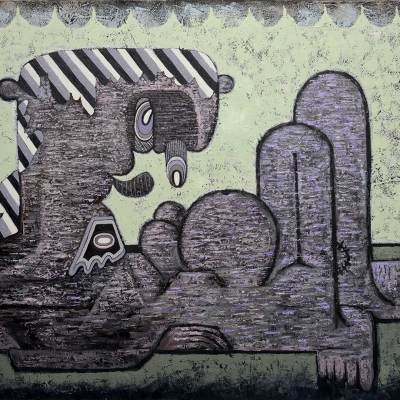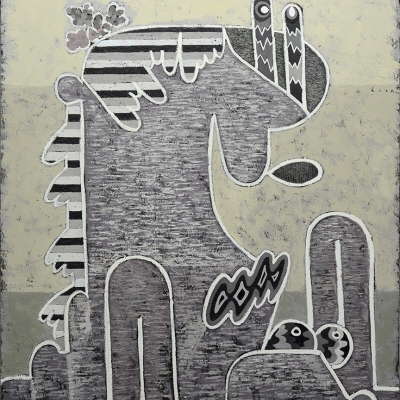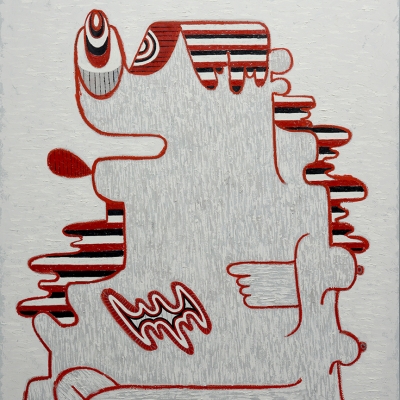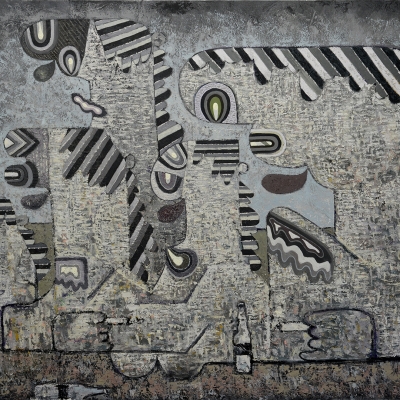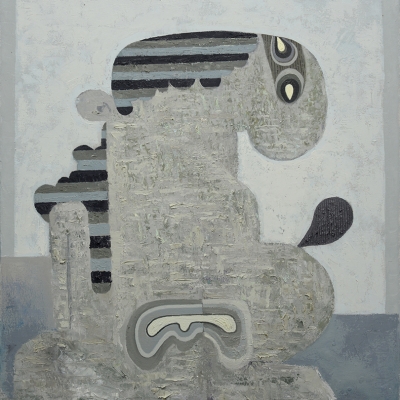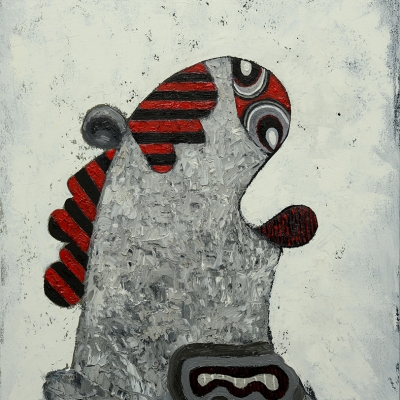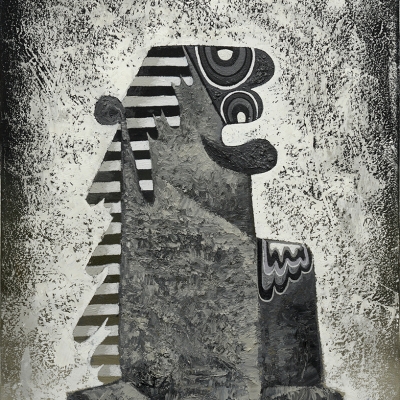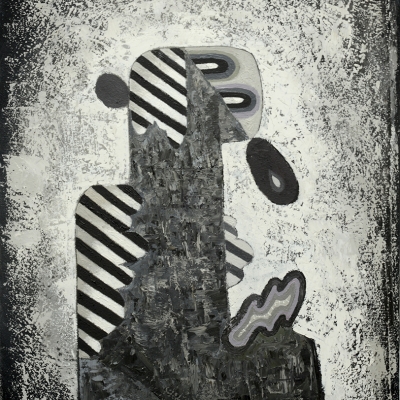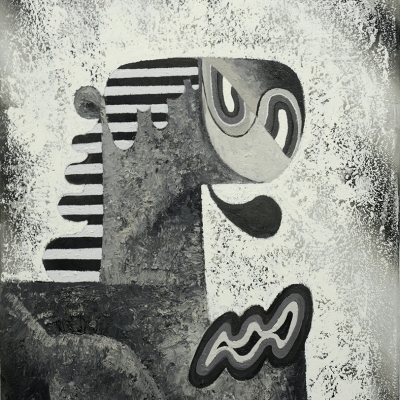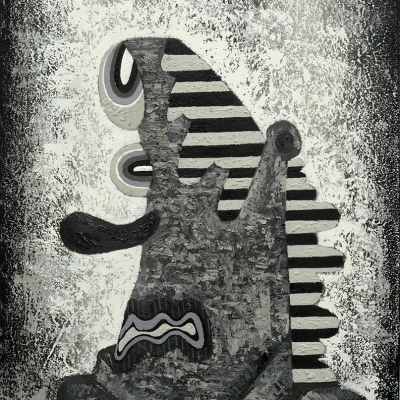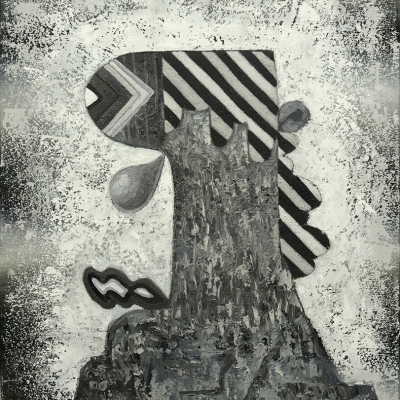The second show since Luis Lorenzana’s intentional departure from the colorful, painterly style associated with most of his artistic career, Lines Compositions Patterns Repetitions marks the change in his point of view. Spanning two rooms, Lorenzana approaches the reframing of his practice in two ways, with both falling under a specificity of intention: to focus on the materiality of his chosen mediums.
In Gallery 1, he relies on the resulting precarity of color arrived at by the relationships between his chosen hues, The paintings are shaped by the muted selection, further killed by the introduction of a variation of greys. Although the figures may still be recognizable as those previously painted by Lorenzana — a familiar “style” of figuration, as it were — there is an underlying abstraction present in the compositions, further intensified by the insistence on the sombreness of colors, a visual exercise in restraint, and lines that delineate but also join each fragment together to create a whole. Each work is the result of different shapes and arbitrations joined together to evoke something specific through their varying configurations.
Lorenzana continues the conversation in Gallery 3, fully embracing the freedom and discomfort that comes with the exploration of unfamiliar territory. Spurred on by his encounters with ideas and readymades by artists such as Philip Guston, Chris Burden, Marcel Duchamp, and László Moholy-Nagy, he transposes these ideas to objects ubiquitous in a working Filipino’s everyday life.
The basahan or floor rugs sold along any street bank in the metropolis have a place in a common Filipino home, and in his second show of Lines, Lorenzana finds room for them, too. Irresistible in its obvious construction as a potential readymade, the basahan is both magical and beautiful in itself, a simple interlocking weaving that serves a purpose evokes a certain kind of nostalgia for those that grew up around such objects. Imbued with a particular character that Lorenzana was in search for, the slew of basahan he used are carefully selected and joined together, an attempt at making something as common as these objects seem new again.
The incorporation of LED signs into this series of work explores still ideas of repetition and familiarity. Nestled between the woven threads, the lights spell out names we may give to the work at hand. “Art,” some say in a steady and constant rhythm, and “sculpture” accompanies a wok covered with rugs while still retaining its shape. The inclusion of these signs mimic the act of naming, too: ascribing to an object — found and selected — something that renews and regenerates its character and its essence.
— Carina Santos

